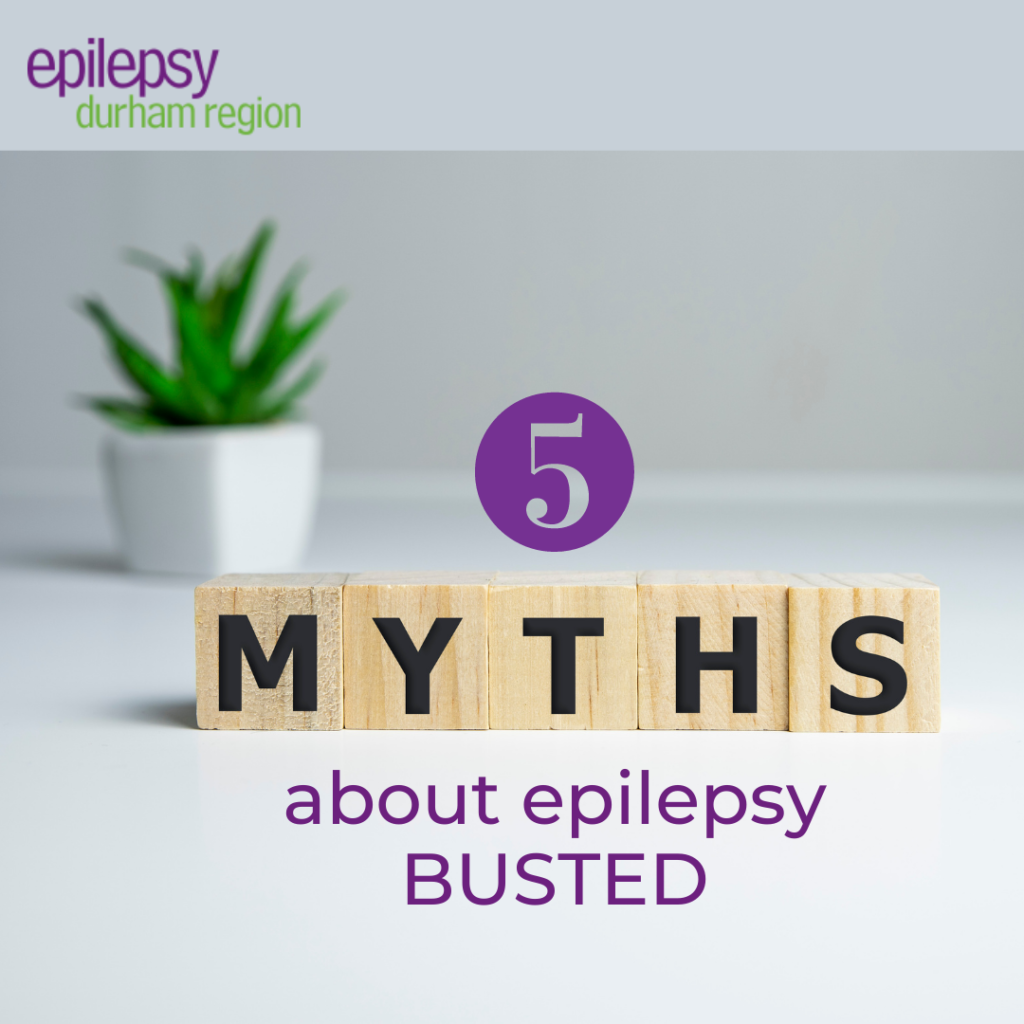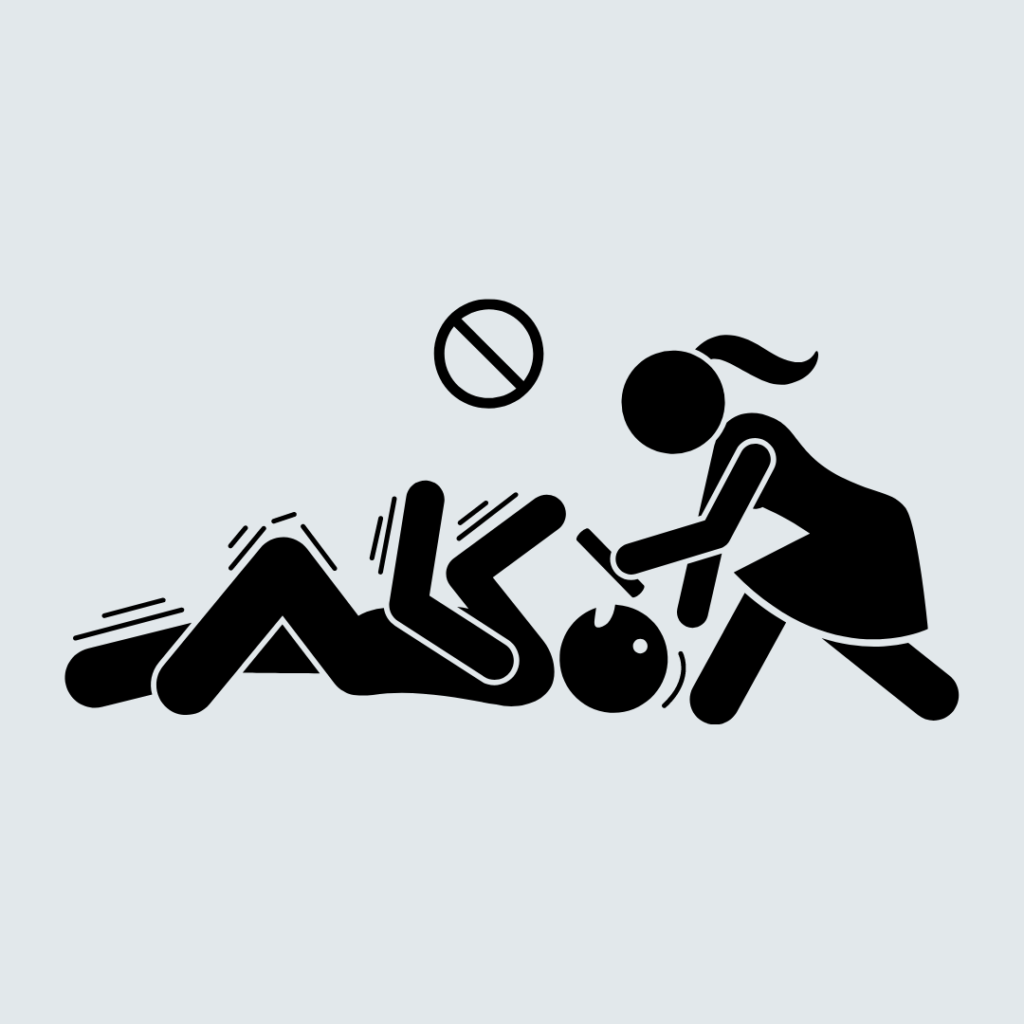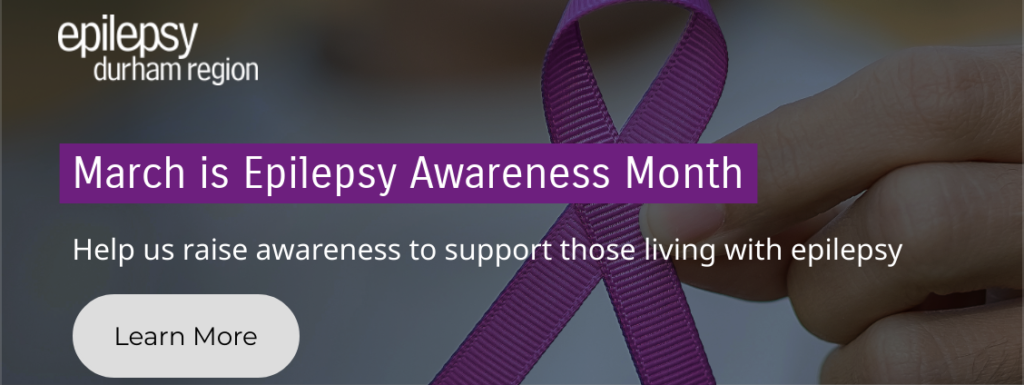
Approximately 1 in 100 Canadians have epilepsy (Ontario Brain Institute, 2019). Epilepsy is a common neurological disease characterized by unprovoked recurrent seizures. Although epilepsy was discovered centuries ago, we need to learn more as a society. In addition to a lack of understanding, several misconceptions about epilepsy continue to perpetuate the stigma surrounding individuals who live with epilepsy. Despite significant progress in diagnoses, treatment, and support, we must continue to raise awareness and BUST these five myths about epilepsy!
There are so many myths about epilepsy that we would love to discuss, here are only five of them. Are you ready to bust some myths?
Myth 1: Epilepsy is only about having seizures.
Reality:

A seizure is a sudden burst of electrical activity in the brain, which can cause abnormal muscle movements (such as stiffness, twitching, limpness), behaviour changes, or sudden changes in awareness. The location of the activity in the brain determines how the seizure is manifested in the body.
There are many different types of seizures and epilepsy syndromes, each with unique presentations. Therefore, sometimes it is difficult to tell when a person is having a seizure. A person having a seizure may seem confused or look like they are staring at something that isn’t there. Other seizures can cause a person to fall, shake, and become unaware of what’s going on around them.
Certainly, seizures are a key indicator of epilepsy; however, having epilepsy may affect an individual’s life in other ways. For example, some people may have problems with sleep or memory and for others, epilepsy may affect their mental health. Additionally, epilepsy may have a significant impact on an individual’s relationships, independence, ability to drive, work, education, emotional health, and general wellness.
If you have epilepsy, don’t forget to look at these issues as well and talk to your health care team for guidance and support.

Myth 2: People with epilepsy look different.
Reality:
You can’t tell if a person has epilepsy just by looking at them – it is an invisible illness. It could be the cashier at the grocery store, your golf instructor, or a child at the park. About 300,000 Canadians have epilepsy (Ontario Brain Institute, 2019). Simply knowing that a person ‘has epilepsy’ does not tell you very much about what happens to them or how epilepsy affects them (refer to myth #1).
Myth 3: Epilepsy is only diagnosed in children.
Reality:

Worldwide, the greatest measure of newly diagnosed cases is in seniors and young children, but epilepsy can begin at any age. No age group is spared from the disease.
Newly diagnosed cases of epilepsy are higher in elderly people than in middle-aged adults (Acharya, 2014). There are many ways that seizures can appear in the elderly, and since focal seizures are more common than generalized seizures in the elderly (Acharya, 2014), it doesn’t mean they will be convulsing. For example, they may experience muscle contractions, unusual head or eye movements, numbness, tingling, repetitive movements, lip-smacking, staring blankly, mood changes, and more. Symptoms of focal seizures can vary greatly depending on the person and particular event.
Some elderly people may not talk about seizure-like episodes, even to their doctors, because they might be afraid and might not understand what is happening. Therefore, awareness and communication are key to managing and treating epilepsy in senior populations.
Myth 4: There’s nothing I can do if someone has a seizure.
Reality:
1 in 10 people may have a seizure in their lifetime (CDC, 2022). This means that seizures are quite common. You might need to help someone stay safe during or after a seizure.
The seizure should eventually stop by itself, and not all seizures are necessarily emergencies. However, try to keep track of how long the seizure lasts. You should call 911 if the seizure lasts longer than 5 minutes or if the person is hurt during the episode.
These are general steps to help someone who is having any type of seizure (CDC, 2022):

- Stay with the person until the seizure ends and they are fully awake. After it ends, help the person sit in a safe place. Once they are alert and able to communicate, tell them what happened in clear and direct terms.
- Comfort the person and speak calmly.
- Check to see if the person is wearing a medical bracelet or emergency/first aid information.
- Clear the area, put something soft under their head, and make sure there’s nothing dangerous in the way of the person.
- Keep yourself and other people calm.
- Offer to call a taxi or another person to make sure the person gets home safely.
Knowing what to AVOID is just as important for keeping a person safe during or after a seizure. Never do any of the following things:
- Do not hold the person down or try to stop his or her movements.
- Do not put anything in the person’s mouth. This can injure teeth or the jaw.
A person having a seizure cannot swallow his or her tongue. - Do not try to give mouth-to-mouth resuscitation (like CPR).
- Do not offer the person water or food until he or she is fully alert.
Myth 5: Epilepsy Durham Region has it all covered.
Reality:
Epilepsy Durham Region’s goal is to encourage others to raise awareness and help eliminate the stigma surrounding epilepsy. Increasing awareness can help those living with epilepsy by giving them hope and reassuring them that they’re not alone. We need your support, and here are some things that you can do to help.

Social Media:
Spread the word using social media! Follow us and share our posts on Facebook, Instagram, Twitter, and LinkedIn. And don’t forget to like our videos and subscribe to our YouTube page.
Share information about epilepsy with others:
Talk or text friends and family to share with them how epilepsy has affected you or someone you know. Lived realities are diverse, yet equally powerful, important, and inspiring.
Donate:
We are a not-for-profit agency without any government funding. This means that we rely on donations to help us continue to support people with epilepsy living in Durham Region.
Get involved:
Volunteer with us, fundraise and attend our events. Purchase merchandise from the Epilepsy Shop (and because you’ve made it to the end of this blog post, here’s a discount code as a Thank You! Use code 002 for a discount at the checkout). Buy tickets for the Monthly 50/50 raffle draw.
March is Epilepsy Awareness Month in Canada. Don’t forget to wear purple on March 26th for Purple Day–supporting epilepsy awareness around the world!
References:
“About Epilepsy.” Canadian Epilepsy Alliance, 20 Oct. 2018, https://www.canadianepilepsyalliance.org/about-epilepsy.
Acharya, Jayant N, and Vinita J Acharya. “Epilepsy in the Elderly: Special Considerations and Challenges.” Annals of Indian Academy of Neurology, Medknow Publications & Media Pvt Ltd, Mar. 2014, https://www.ncbi.nlm.nih.gov/pmc/articles/PMC4001216/.
“Building Innovation in Brain Research & Care.” Ontario Brain Institute, 20 Mar. 2022, https://braininstitute.ca/news-events/2019/epilepsy-survey-gives-voice-to-patients-in-setting-their-research-priorities.
“About Epilepsy.” World Health Organization, World Health Organization, https://www.who.int/news-room/fact-sheets/detail/epilepsy.
“First Aid.” Epilepsy Ontario, https://epilepsyontario.org/about-epilepsy/first-aid/.
“Seizure First Aid.” Centers for Disease Control and Prevention, Centers for Disease Control and Prevention, 2 Jan. 2022, https://www.cdc.gov/epilepsy/about/first-aid.htm.

